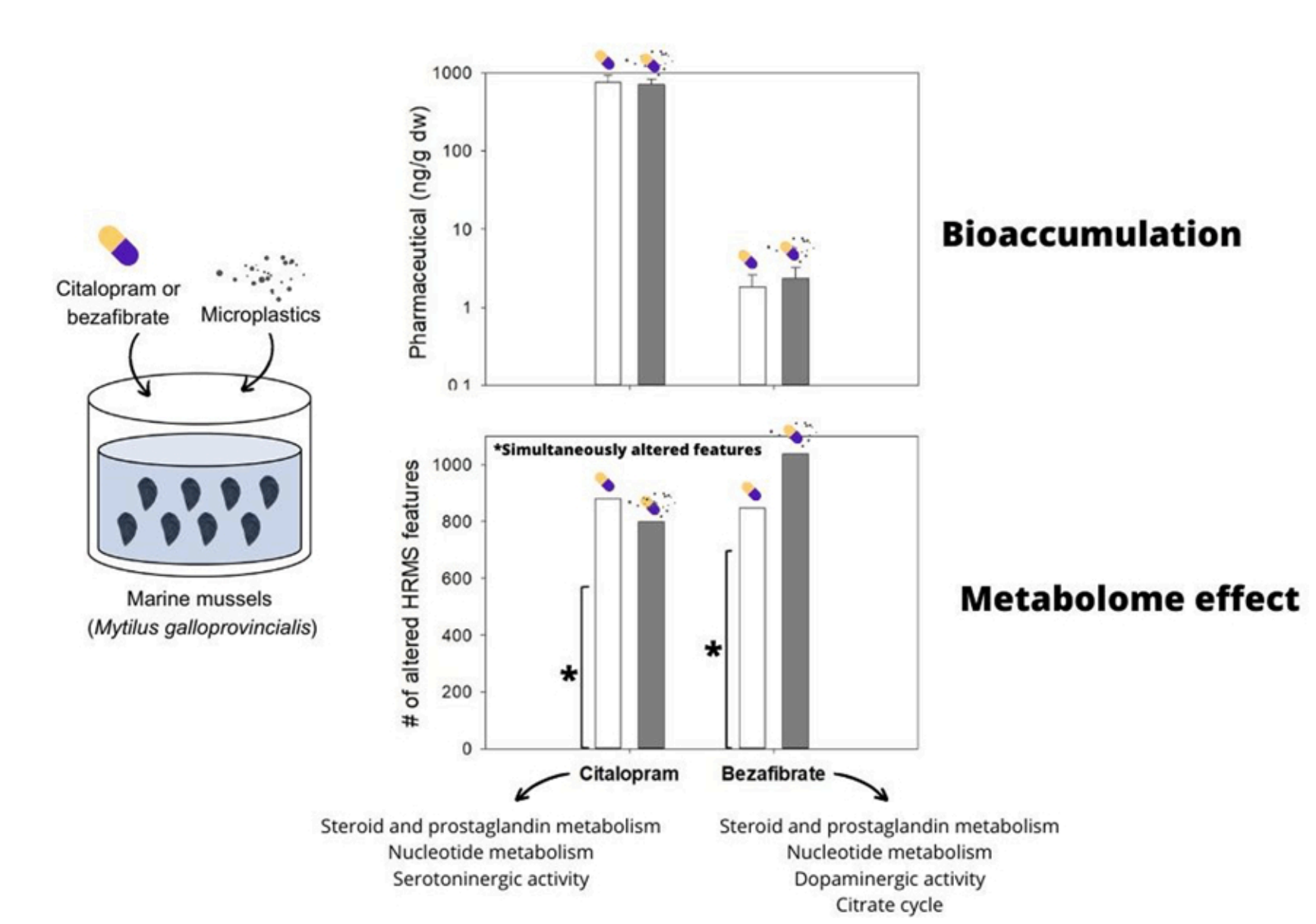The bioaccumulation of citalopram and bezafibrate in mussels have been characterized and recently published in Journal of Hazardous Materials.
A bioassay on Mediterranean mussels (Mytilus galloprovincialis) was carried out with citalopram and bezafibrate, considering an exposure period of three weeks and one week of depuration period. This study has been recently published in the scientific journal “Journal of Hazardous Materials” and it has been performed thanks to the collaboration between PHARMASEA and PLAS-MED projects. The bioaccumulation of the antidepressant citalopram in the whole body was significantly higher (almost two orders of magnitude) than for lipid regulator bezafibrate after the exposure. The concentrations in hemolymph were also higher for citalopram than for bezafibrate. After the depuration, the concentrations decreased by 5-fold in the whole body within the 7 days. The complementary mass balance performed, based on water and mussel concentrations, demonstrated a moderate retention of citalopram in mussels (10% of the total amount added to the system), in comparison to bezafibrate (<0.1%), which remained almost completely in the water phase. Additionally, the combined exposure to polyethylene and pharmaceuticals was also tested. The biological effects have been also assessed in this experiment, but these results will be discussed in other specific publication in collaboration with the partner team of this project from UNIVPM.
https://doi.org/10.1016/j.jhazmat.2023.131904
Reference: Castaño-Ortiz, J.M., Courant, F., Gómez, E., García-Pimentel, M.M., León, V.M., Campillo, J.A., Santos, L.H.M.L.M., Barceló, D., Rodríguez-Mozaz, S. 2023. Combined exposure of the bivalve Mytilus galloprovincialis to polyethylene microplastics and two pharmaceuticals (citalopram and bezafibrate): Bioaccumulation and metabolomic studies. Journal of Hazardous Materials 458, 131904.







